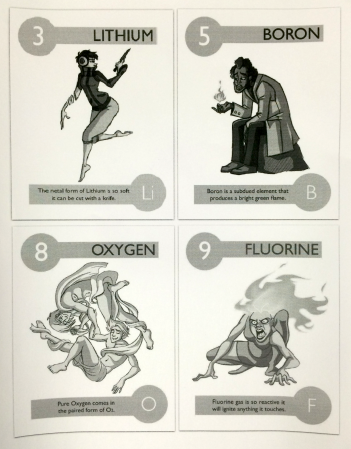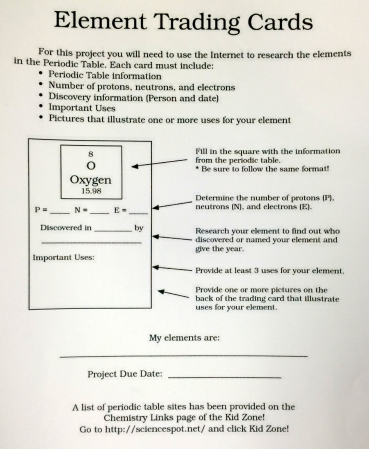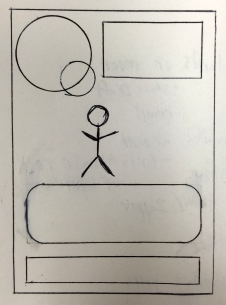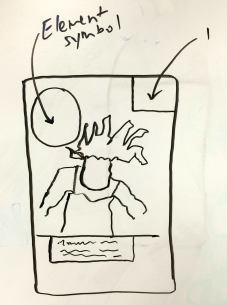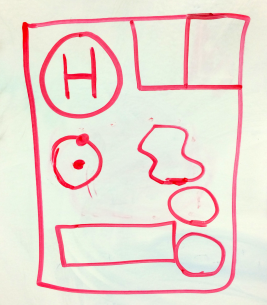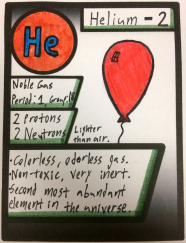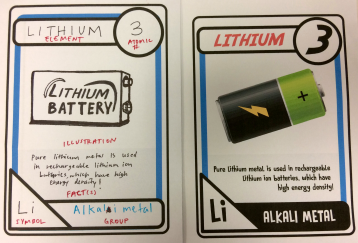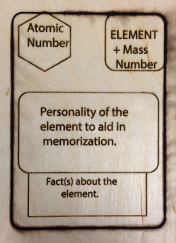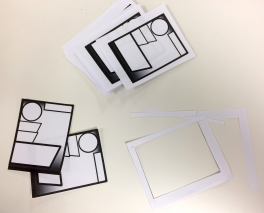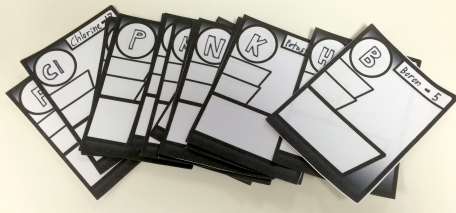Periodic Table Card Game
According to many students, introductory chemistry is difficult because they don’t understand the fundamental chemistry concepts. This project aims to come up with an interesting way for students to memorize the different properties of elements in the periodic table.
This is a card game that brings the elements to life. Each element is given a unique attribute, illustration and story. Also, drawn on the cards are each element’s atomic number, mass number and family. The cards also have a brief description of the element.
This game is a modified version of a card game called ‘war'. However, in this case the students are the ones to come up with the rules of the game.
Authors:
Luke Hanley, Vincent Bett, and Nico Lusardo.
Description
Since this is a way to help the students learn the elements, the class should be split into groups of two, the teacher should then assign each group the task of making their own cards.. The students will then have to do some research on the elements and come up with interesting facts and illustrations to draw on the cards. Since the cards are 2.5 * 3.5 inches, the students need to come up with short, easy to remember facts to aid in memorization.
As an example, Oxygen could be called the life giver who when angered has the power to rust metal elements and send them to the toxic waste pile.
Once the cards have been prepared, it’s time to play. There are many rules to choose from when playing the game i.e. using the number of valence electrons, order of reactivity or the mass numbers.
As an example, when using the number of valence electrons, the element with the higher number has the upper hand.
The students could also make a game using more than one rule.
Big Idea
We were told to create a project that would help to improve the students’ understanding of chemistry. After a brainstorming session, we decided to create a card game that revolves around the elements of the periodic table whose aim is to help students grasp the different properties of the elements.
Testing the Game
First, we cut small strips of blue manilla paper and wrote down the first 20 elements on the periodic table on each one of them. We then started playing the game to see if it would be interesting.
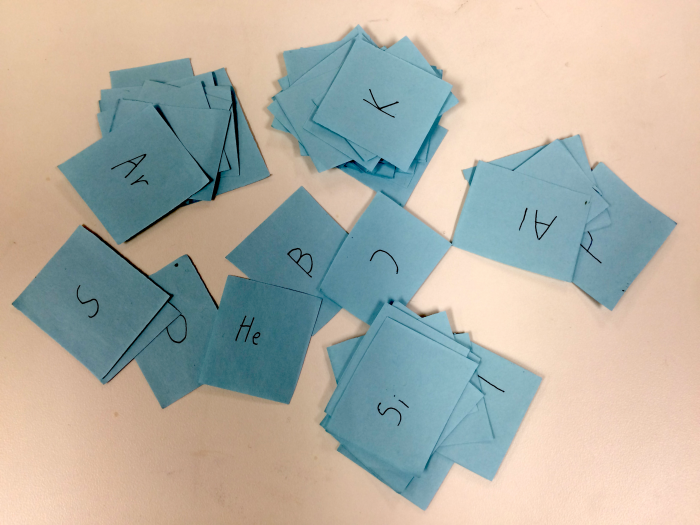
Examples Found Online
Then, we looked for ways to design the cards in such a way that they would convey the most relevant information while still being pleasing to the eye.
Initial Sketches
We also incorporated some of the findings that we had gotten from the internet and made our own templates.
Updated Sketches
We then used those templates to come up with a series of colorful designs.
Final Design
Finally, we printed black and white versions of the best design. Students would fill out the cards further in order to learn more about each element.
General Rules to the Games
Before starting the game, the students must agree upon a characteristic of their elements by which to create a hierarchy. For example, students could simply play that the element with the highest atomic number wins. Using these rules, if one student plays a carbon and the other student plays a hydrogen, the student who played the carbon would win because carbon has a higher atomic number. However, this game could be played with a large variety of rules. Winning cards could be based on their number of valence electrons, their electronegativity, their group, their alphabetical symbol, or any number of different quantifications in order to establish a hierarchy amongst the cards. It is up to the students to be creative and create a game that is fun to play.
The rules we used were:
- To start the game, one student from each group will take the deck of cards they created and shuffle them.
- Each student holding the cards will flip the deck over, with the backs of the cards facing up in order to not see which card is on top.
- At the same time, each student will take the card from the top of the deck and flip it over onto the table.
- Looking at the two element cards flipped over, based on the rules established previous to the start of the game as to which cards win, the student who played the winning card takes both cards played and adds them face-down to the bottom of their deck.
- If the students each throw the same card, in order to settle the tie, each player throws three cards face-down and a fourth card face-up. Using the fourth card face-up as the newly played card, whoever throws the winning card wins. The winner of the tie break then takes all the cards on the table from that play and puts them on the bottom of their deck.
- This is repeated until one student is left with all the cards, making them the winner. The cards can then be separated so that each student gets their own set of cards back.

